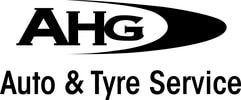Subaru Foresters and CV Joints
Subaru Foresters do have CV (constant velocity) joints. The CV joint is a crucial component of the CV axle, which is responsible for transferring power from the transmission to the wheels while allowing for smooth power delivery, even during turns and suspension movement .
CV joints can experience wear and tear over time, leading to symptoms such as clicking noises when turning sharply and grease leaking from the CV axle boot. If you notice these symptoms, it may be an indication that your Subaru Forester’s CV axle needs to be replaced.
It’s important to address CV joint issues promptly to ensure a smooth and comfortable ride. If you suspect a problem with your Subaru Forester’s CV joints, it is recommended to have them inspected and replaced if necessary by a qualified mechanic.
Please note that the information provided is based on the search results available up until the knowledge cutoff date of March 30, 2024. For the most accurate and up-to-date information, it is always best to consult the manufacturer’s documentation or contact a Subaru dealership.
Let me know if there’s anything else I can help with!
Contents
- What are the symptoms of a failing CV joint?
- Do 4WD have CV joints?
- Can you drive a AWD car with a broken CV axle?
- How do I know if my Subaru CV joint is bad?
- What are the symptoms of a bad CV joint?
- What vehicles have CV joints?
- Do AWD vehicles have CV joints?
- How long do CV axles last Subaru?
- How much does it cost to replace a CV axle on a Subaru?
- Do Subarus have CV joints?
What are the symptoms of a failing CV joint?
When joints wear out, the symptoms will be obvious. If there’s an issue with the inner joint, you’ll experience vibration and noise during straight line acceleration. If you’re experiencing a loud popping or clicking sound when sharply turning, it’s likely an outer joint issue with the CV axle.
Do 4WD have CV joints?
With the introduction of the Rzeppa-type CV joint to common 4WD vehicles a new era in off-road traction began. The CV joint allows smooth application of power while the steering wheel is turned, which maximises traction between the tyre and the ground.
Can you drive a AWD car with a broken CV axle?
If you drive a car with a damaged CV, the joint will deteriorate more, making driving impossible. You’ll be at risk of getting into an accident. In summary, it is advisable to neve drive a vehicle with faulty CV joints.
How do I know if my Subaru CV joint is bad?
But I don’t get much noise but then if I turn. It. You hear that Rumble. And feel that Rumble that’s the u-joints. Trying not to break in half. So. If when you’re driving straight.
What are the symptoms of a bad CV joint?
And prevent it from working properly. In some situations. If you don’t hear clicky noises when turning. And catch a tiny leak early on you can just order the boot with grease.
What vehicles have CV joints?
CV joints are part of the driveshaft and are used primarily on front-wheel drive vehicles, but they are also used in rear- and four-wheel drive vehicles. Each drive wheel has two CV joints: the inner joint connects the transmission to the axle, and the outer joint connects the axle to the wheel.
Do AWD vehicles have CV joints?
Constant Velocity or CV joints are used in most front wheel drive vehicles, many all-wheel drive vehicles and some rear wheel drive vehicles. A CV joint is a joint designed to transmit even power through a wide range of angles with minimum friction and internal play.
How long do CV axles last Subaru?
The lifespan of your CV axle is typically fairly long, withstanding 80,000 to 100,000 miles under regular driving conditions. If you begin hearing a loud, rhythmic clicking noise as you turn, it’s a good sign the axle is failing.
How much does it cost to replace a CV axle on a Subaru?
The cost of parts ranges between $760 and $1,030, while labor cost is between $170.00 and $180. Replacing a single axle usually takes about 1.5 to 3 hours, so replacing all four others can take up to 12 hours, which increases the cost if you factor in both parts and labor. However, replacing all four axles is optional.
Do Subarus have CV joints?
Subaru Constant Velocity (CV) joints and shafts are the last link in the drive train between engine and wheels. Being an all-wheel drive system, with both front and rear drive shafts and CV joints, Subaru CV joints have to endure more load and stress and this results in more frequent failures.

